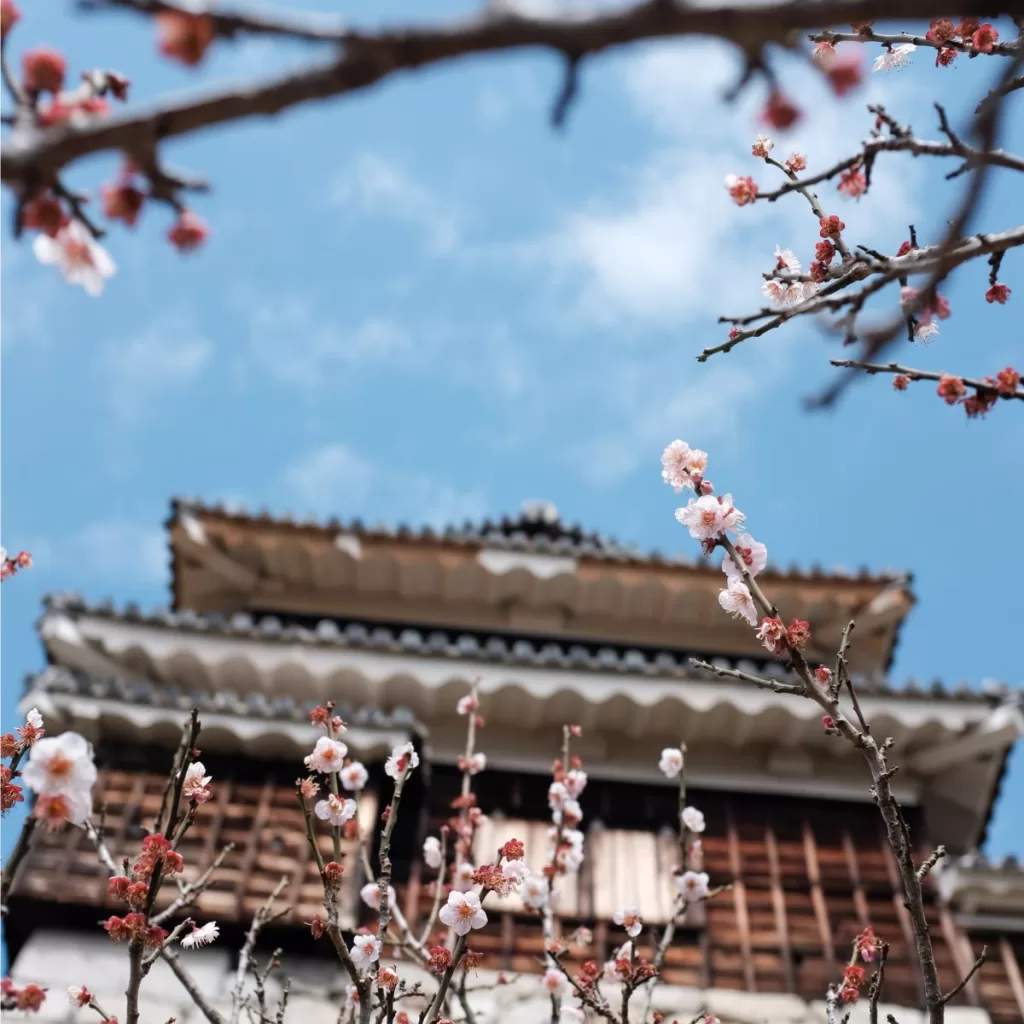Matsuyama Castle: A Gateway to Japan’s Feudal Past
Perched atop Mount Katsuyama stands the magnificent Matsuyama Castle, one of Japan’s 12 original castles. Over 400 years old, this imposing fortress provides an authentic window into feudal Japan. As visitors ascend the stone walls and pass through the castle gates, they are transported back to the age of samurai.
History of Matsuyama Castle
Construction on Matsuyama Castle began in 1603 under the direction of feudal lord Kato Yoshiaki. It took over two decades to complete the sprawling complex, designed to showcase the strength and status of the ruling Kato clan. The castle design followed the latest innovations in defense, with concentric circles of walled courtyards leading up to the innermost keep.
In 1635, the Kato clan was transferred to Aizu and replaced by the Gamō clan. The massive five-story keep was completed under their watch. However, lord Gamō Tadatomo died shortly after finishing the secondary Ninomaru courtyard.
In 1642, the keep burned down after being struck by lightning. It was rebuilt on a smaller three-story scale that following year when the Matsudaira clan took over. They resided there until the end of the feudal era.
After the Meiji Restoration in 1868, most of the gates, turrets, and walls were demolished. But the main keep survived, earning Matsuyama Castle status as one of Japan’s 12 original castles. It remains an exceptional example of feudal architecture and fortifications.

Key Structures and Highlights
Main Keep
The three-story main keep sits proudly atop the castle’s innermost circle. Its imposing stone walls are topped with gabled green roofs decorated in elaborate trim. Inside the keep are exhibits detailing the history of Matsuyama Castle and life in feudal Japan.
Corner Turrets
Attached to the main keep are two L-shaped corner turrets, known as yagura. These structures housed warriors who defended the innermost courtyard. The north and south turrets are connected to the keep by covered corridors.
Gates
A series of gates controlled access through the concentric courtyards. The Main Gate features elaborate carvings and design elements. Visitors pass through the impressive Drum Gate, with openings to drop stones on intruders below. The Hidden Gate allowed surprise attacks on enemies.
Stone Walls and Moats
Curving stone walls and wide moats formed critical defensive barriers. The walls were designed to resist bombardment and feature overhangs that allowed defenders to drop stones. The moats slowed attacks and made underground tunnels more difficult to dig.
Ninomaru Garden
At the base of the castle lies the scenic Ninomaru Garden, the site of the former secondary courtyard. Though the palace buildings are gone, the gardens preserve the original layout with ponds, trails, and grassy expanses.
Panoramic Views
From its lofty perch, the castle provides sweeping views over Matsuyama City and the Seto Inland Sea. On a clear day, visitors can see all the way to the islands of Shodo-shima and Naoshima floating on the horizon.
Cherry Blossoms
Over 200 cherry trees burst into bloom each spring around the castle grounds, drawing crowds of hanami viewers. The castle’s hilltop location makes it one of the top spots in the region to admire the fleeting cherry blossoms.
Accessing the Castle
The castle sits atop steep Mount Katsuyama in central Matsuyama. Visitors have several options to reach the hilltop grounds:
- Ropeway cable car: A 5-minute walk from the castle. Frequent departures and great views.
- Chairlift: Single-person chairs provide a fun ride up the mountainside in about 3 minutes.
- Hiking: Follow paved paths from Ninomaru Garden or Shiroyama Park. The scenic 15-minute walk winds through the forest.
Matsuyama Castle stands as one of Japan’s most authentic surviving feudal castles. Exploring its stone walls, passing through its gates, and climbing up to the top of the keep provides a vivid journey back in time to the samurai era. For anyone interested in Japanese history and architecture, this is a must-see destination.
Matsumoto Castle is another stunning Japanese castle that you should see to completely understand the magnificence of traditional Japanese architecture.